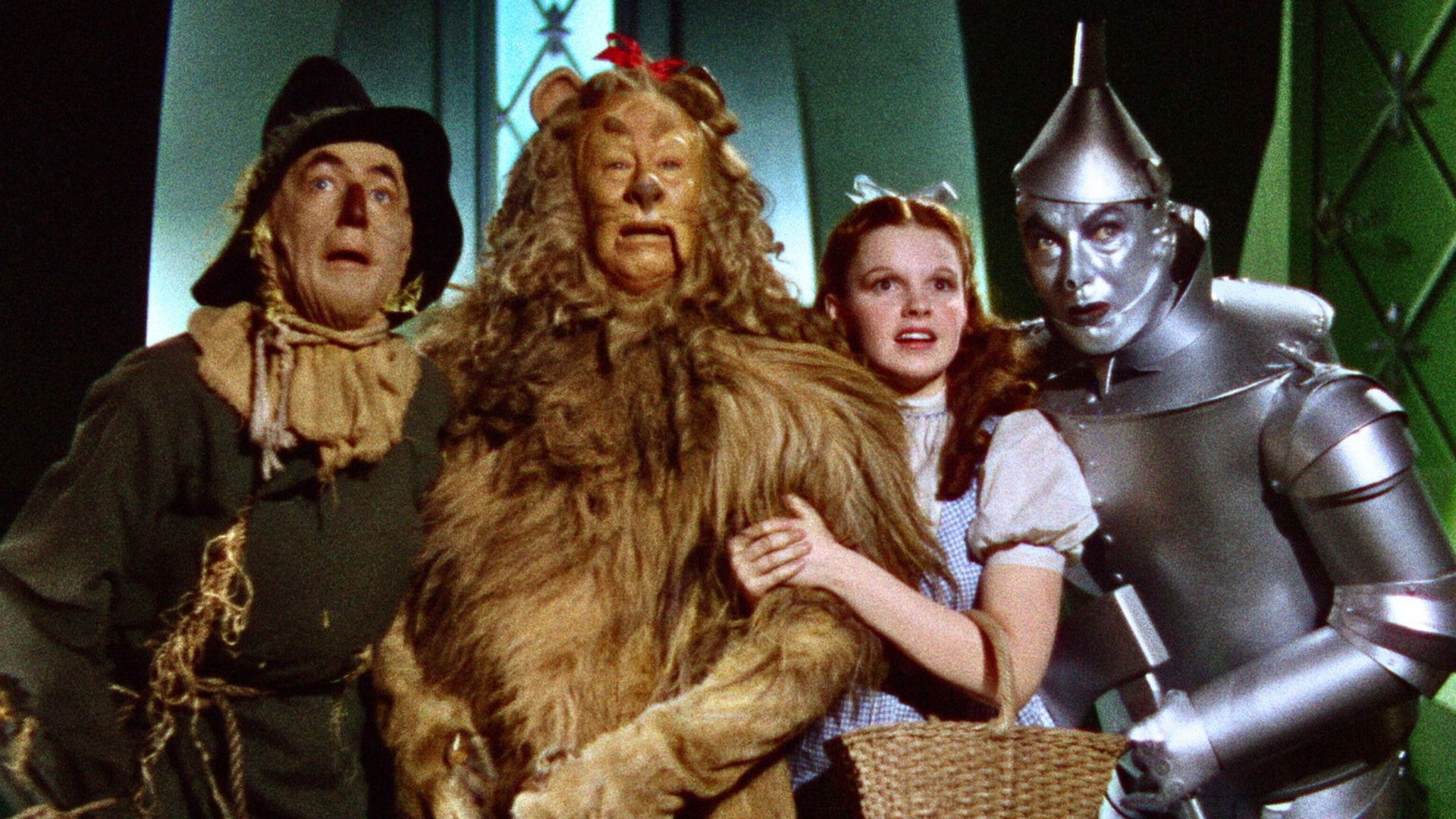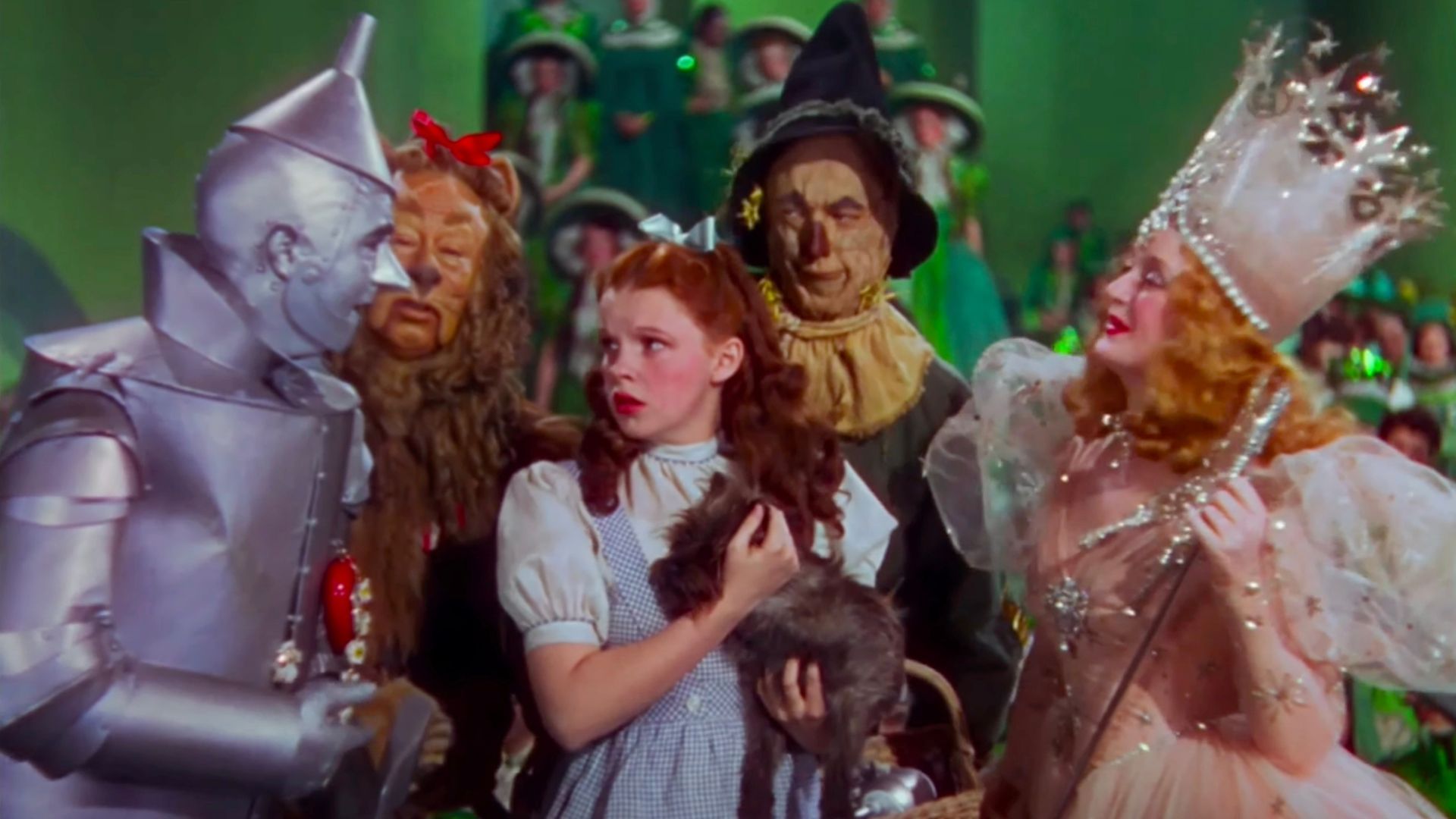
Considered a groundbreaking film, The Wizard of Oz dramatically changed filmmaking with its vibrant Technicolor and innovative special effects. Nearly 90 years after its release, the movie remains beloved, and Judy Garland’s performance as Dorothy Gale is still celebrated. Margaret Hamilton’s iconic Wicked Witch also heavily influenced how villains were portrayed in later films. The film’s artistic and cultural impact is undeniable, leaving a lasting legacy. However, the production wasn’t without its difficulties; behind the scenes, the cast and crew faced significant challenges and, at times, mistreatment, which casts a shadow over the film’s otherwise brilliant history.
Making The Wizard of Oz was incredibly difficult and risky for many of the actors. While everyone knows about the long-term struggles Judy Garland faced, the physical dangers on set were also very real. Buddy Ebsen, the first actor cast as the Tin Man, suffered permanent lung damage due to an allergic reaction to the silver paint. And Margaret Hamilton, who played the Wicked Witch, was seriously burned during a special effects scene involving fire and smoke.
Even if the problems actors experienced weren’t due to carelessness or a lack of preparation – the film was ambitious and presented unique difficulties – there were still many safety concerns during production. Injuries occurred because special effects weren’t coordinated well, and some aerial stunts weren’t set up correctly, causing minor harm. Despite all these issues, many false stories surround The Wizard of Oz. One common myth claims a Munchkin actor died by suicide on set and appears as a shadow in the film. Another persistent rumor is that asbestos was used to create the snow effect. We’ll investigate whether this claim is true.
Why ‘The Wizard of Oz’ Is Associated With Asbestos Snow

MGM
The famous “poppy field” scene in The Wizard of Oz, where Dorothy and her companions fall asleep and wake up in a snowy landscape, is visually stunning, like many scenes featuring snow in film. However, it’s now known that asbestos was used during filming to create that snow effect. Specifically, the production used chrysotile asbestos, prized for its bright white color. This material is now recognized as a health hazard because the tiny fibers can remain in the lungs for years, increasing the risk of cancer. Despite being dangerous, asbestos was chosen for its fire-resistant qualities and its ability to convincingly mimic snow on screen.
Asbestos was frequently used in the 1930s, both in filmmaking and everyday life. Surprisingly, the broom in The Wizard of Oz and the Scarecrow’s costume were actually made of asbestos, though a less harmful type, according to Atlas Obscura. This same asbestos material was also a common substitute for snow in Christmas decorations and store displays, valued for its strength and resistance to fire. While safety wasn’t a top priority on the set of The Wizard of Oz, the use of asbestos wasn’t unusual or excessive for the time. Considering how readily available and commonly used asbestos was – even as fake snow – it’s highly likely it was used in other aspects of the film’s production.
A Counterpoint to the Claim of Asbestos Being Used as Snow in ‘The Wizard of Oz’

MGM
Many people believed a dangerous substance was necessary to create the iconic “poppy field” scene. However, a different explanation has emerged. Film historian William Stillman interviewed Charles Schram, a makeup artist at MGM, who clearly remembered that the artificial snowflakes were actually made from crushed gypsum—a mineral also found in plaster of Paris. According to History magazine, Schram was certain of this, stating that part of his job involved removing gypsum particles from Judy Garland’s and Bert Lahr’s (the Cowardly Lion) wigs.
In the 1930s and 40s, crushed gypsum was a popular choice for creating snow on movie sets because it was inexpensive and easy to get – the classic film It’s a Wonderful Life (1946) reportedly used it. However, gypsum was notoriously messy, and one technician, Schram, said he often had to remove plaster dust from the actors – a task he believed would have been easier with asbestos. While it seems clear that gypsum was used on set instead of asbestos, both claims remain somewhat questionable.
We May Never Know What Material Was Used on the Set of ‘The Wizard of Oz’
One Answer Seems More Obvious

MGM
According to the only available firsthand account from makeup artist Charles Schram, it’s more probable that gypsum, not asbestos, was used on set. However, Schram also told History magazine that asbestos was present, specifically in the Scarecrow’s costume. Production notes or records don’t definitively confirm whether asbestos was used for the snow, either completely or partially. While many reports suggest it was, this likely stems from the various tragedies – both real and exaggerated – surrounding the filming of The Wizard of Oz. The story of asbestos is simply more compelling than the truth: that the material used was likely just messy, but not harmful.
Even if asbestos wasn’t used during filming, The Wizard of Oz was a production filled with problems and safety issues, making it one of the most difficult and hazardous in movie history. However, these issues don’t take away from its magic, and audiences can still enjoy it today. You can currently watch The Wizard of Oz (1939) on HBO Max.
Read More
- Mobile Legends: Bang Bang (MLBB) Sora Guide: Best Build, Emblem and Gameplay Tips
- Clash Royale Best Boss Bandit Champion decks
- Best Hero Card Decks in Clash Royale
- All Brawl Stars Brawliday Rewards For 2025
- Best Arena 9 Decks in Clast Royale
- Vampire’s Fall 2 redeem codes and how to use them (June 2025)
- Clash Royale Witch Evolution best decks guide
- Brawl Stars December 2025 Brawl Talk: Two New Brawlers, Buffie, Vault, New Skins, Game Modes, and more
- Clash Royale Furnace Evolution best decks guide
- Call of Duty Mobile: DMZ Recon Guide: Overview, How to Play, Progression, and more
2025-11-15 22:18